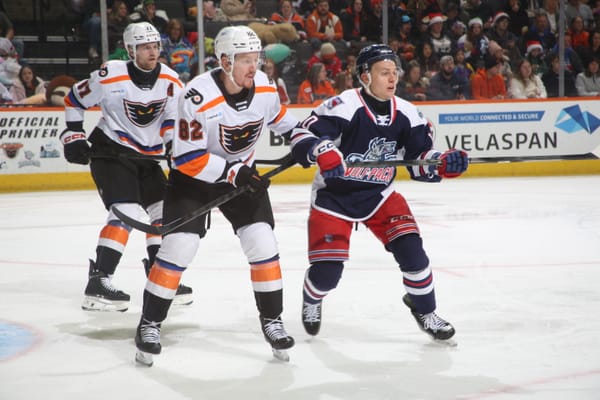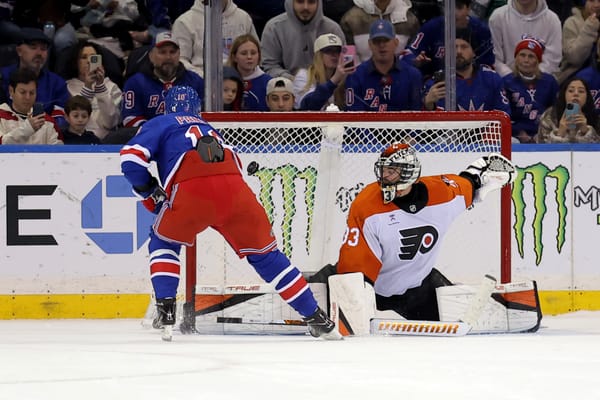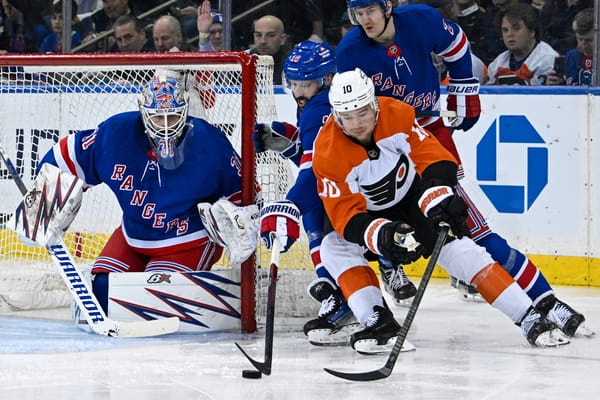Reminiscing on Brief Blueshirt Tenures: Early 2010’s Edition
As one of the NHL’s most iconic franchises, the Rangers have seen so many players don their colors over the years, it’s easy to forget a handful of them.
With the 2010’s officially in the rear view mirror, the time has come for some reflection on one of the most successful decades in Blueshirts’ history. After exiting the “Dark Ages” and finishing the 2000’s with four consecutive playoff appearances, the Rangers entered the 2010’s with high hopes. Although they exited the decade without securing their ultimate goal of a fifth Stanley Cup title, the 2010’s represented one of the franchise’s most successful decades in their history.
A resume featuring nine playoff series victories, seven consecutive playoff berths from 2011-2017, and three Conference Finals appearances is about as strong as any team can muster up without laying claim to a championship. Back-to-back seasons featuring an Eastern Conference Championship in 2013-14, followed by the franchise record 113 point regular season in 2014-15 to earn a third Presidents’ Trophy served as the high point of hockey in New York at any point over the last quarter century.
The 2010’s saw the Blueshirts utilize three head coaches, 13 goaltenders, and over 120 different skaters to achieve their success. Only two players, Henrik Lundqvist and Marc Staal, spent the entirety of the decade on Broadway, and have already etched their name into the franchise’s history books.
Former fan favorites such as Derek Stepan, Ryan McDonagh, and Mats Zuccarello spent a majority of the past ten years in New York, but an organizational shift away from winning immediately lead the Blueshirts to part ways with them. Then there’s the Cam Talbot’s, Mike Rupp’s, and Dan Carcillo’s of Rangers’ lore. That trio of players didn’t spend enough time on Broadway for the totality of their tenures to be remembered, but singular moments during their stints in New York are burned into the memory of Rangers’ fans around the world.
For all the love those players receive from Rangerstown to this day, there’s an even larger segment of former Blueshirts that have been lost to the annals of history. With 93 seasons worth of players games to recall dating back to the Roaring Twenties, keeping track of all the players to pass through on one year deals or earn cups of coffee with the team is a daunting task. It’s easy to remember the splashy deadline deals Glen Sather made throughout his time as general manager, but the random waiver claims and in-season signings in between? Not so much.
With all that being said, a trip down memory lane is on the docket for today. Let’s take a look at some of the Blueshirt’s most forgotten players prior to their success in the middle of the decade:
The Backup Goaltending Carosuel of 2010
Upon Henrik Lundqvist’s arrival on Broadway, the backup goaltender position became one the Rangers generally filled without issue. Kevin Weekes was around to spell Lundqvist during the first two seasons following the lockout, and current MSG analyst Steve Valiquette succeeded Weekes for two and a half seasons following #80’s departure to New Jersey.
However, an 8-3 shellacking at the hands of the defending champion Pittsburgh Penguins on November 28th proved to be Valiquette’s final NHL appearance, and gave way to a half season’s worth of volatility behind Lundqvist. The Swedish netminder took the next 17 decisions for John Tortorella’s squad before sitting for now-journeyman backup Chad Johnson on January 7th. Johnson would make three more starts for the Blueshirts that season, and Matt Zaba chipped in with the only NHL appearance of his career at the Bell Centre on January 23rd, before Glen Sather opted to seek out an experienced netminder.
Re-entry waivers were abolished in the CBA signed to kick off the 2012-13 campaign, but that was before Alex Auld found himself on a plane to New York as a result of them. As the fifth goaltender to man the Blueshirts’ crease that season, one might think the team would look to make the most of finally securing a steady veteran.
Instead, Auld only appeared in three games and took one decision during the 2010 stretch run, as Lundqvist started the final 17 games as New York made during their mad dash for a playoff spot to conclude the 2009-10 season. That season saw the Rangers use more goaltenders than any season before or after the lockout, while Lundqvist still managed to set his career high in games played. The Blueshirts’ current goaltending situation is a chaotic mess right now, but it pales in comparison to the onset of the decade.
Skilled (and Not So Skilled) Forwards Get Lost In The Shuffle
After missing the playoffs in 2009-10, the Rangers sought to add some more pop to their lineup before returning to the 2011 Stanley Cup Playoffs. Enter Alexander Frolov, the former Los Angeles King who signed a one year, $3 million contract coming off the heels of his fifth consecutive 50+ point season. Although Frolov’s 51 points in 2009-10 represented the fourth year in a row his production declined, (previous seasons of 59, 67, and 71 points) there was reason to believe he could still produce enough offense to merit the price tag.
Alas, the highlight of Frolov’s tenure was a highlight reel pre-season goal, as his scoring declined further to the tune of a 7-9-16 stat line through 43 games before tearing his ACL shortly after the calendar turned to 2011. In an effort to replace what Frolov was supposed to bring, Glen Sather shipped the much-maligned Michal Roszival to the Phoenix Coyotes to land Wojtek Wolski.
In spite of being dogged by a reputation of being a highly skilled player who spent more time in the tub than on the ice, Wolski was productive during his short stint in New York. Something of an analytics darling before things like Corsi For% and Expected Goal models were popular to use, Wolski was consistently a net positive on the ice.
The 6-22-28 stat line he posted in 48 games on Broadway (not to mention a respectable 1-2-3 showing in the Blueshirts’ five game playoff series against Washington in 2011) was nothing to sneeze at either, but he consistently found himself in his coach’s doghouse before being demoted to AHL Connecticut, and eventually shipped off to the Florida Panthers.
While Frolov and Wolski were two of the more forgettable higher upside forward projects, the Rangers were no stranger to opting for less skilled options throughout the early part of the decade. Todd White drew into the Blueshirts’ lineup 18 times during the 2010-11 campaign after arriving in an offseason trade from Atlanta. Jody Shelley, John Scott, and Jeff Halpern all skated for Tortorella’s Rangers prior to his firing, while Darroll Powe and Brandon Mashinter played regular season games for both Tortorella and Alain Vigneault.
Depth Defenseman Causing Depth Issues
The latter half of the decade has seen the Rangers consistently trade for and sign quality veterans to serve as depth defenseman. Raphael Diaz, Matt Hunwick, Adam Clendening, and Frederik Claesson are the more recent examples of this, but it took Sather, Jeff Gorton, and the rest of New York’s decision makers a couple of tries to nail down the ideal 7th defenseman.
The first example of that would be on the 2011-12 team that scraped together 51 wins. While Stu Bickel is the most infamous example of a player on that squad who didn’t belong in the NHL, he served as a precursor to Brendan Smith’s role as a hybrid player. The Rangers only had three defenseman play 75+ games, and had 11 total defenseman dress over the course of the season, and the most random of the bunch may have been Jeff Woywitka.
Woywitka’s 27 games played helped fill out a defense corps that featured future defensive partners Marc Staal and Anton Stralman out of the lineup for 65 games, and also saw Michael Sauer’s career tragically get cut short after receiving a hit from Dion Phaneuf. As random as Woywitka’s tenure was, the Blueshirts raised the bar in each of their successive seasons.
In need of veteran depth following Marc Staal’s eye injury, the Rangers opted to claim then-38 year old Roman Hamrlik off waivers from the Washington Capitals. After struggling to crack the Capitals’ lineup, the organization figured he’d be able to help shore up New York’s back end. After 12 nondescript games during the regular season and two more during the 2013 playoffs, Hamrlik retired following the Blueshirts’ second round elimination.
Lastly, as the 2014 Eastern Conference Champions, it would normally be difficult to forget any members of the most successful Rangers’ squad this side of 1994. However, if you tried listing every member of the 2013-14 Blueshirts, you’d be hard pressed to remember that Justin Falk was on that roster.
After opening the season as Alain Vigneault’s seventh defenseman, Falk drew into the lineup 20 times through the first 40 games. Once the calendar turned to 2014, Falk sat out every meaningful game for the Blueshirts from January through June. He skated in New York’s 82nd regular season game, a 1-0 loss against Montreal after they had already clinched home ice advantage against Philadelphia to open the playoffs, but watched the other 66 games his team played from the press box.
For all the success the Rangers had in the first half of the decade, it took a cavalcade of players chipping in to achieve what they did. The latter half of the 2010s saw the Blueshirts stumble from their lofty perch, and the players that will show up in part two of this series will reflect that, so stay tuned.





